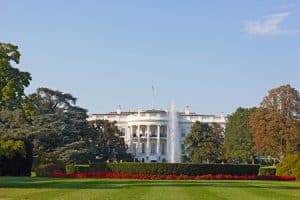“It’s terrible news,” said Gustavo Velasquez, who was the assistant secretary for fair housing and equal opportunity at HUD during the final three years of the Obama administration. “I am concerned, though, that this is not actually the worst news.”
During the delay, he fears that the Trump administration will entirely undo the rule, which has been a goal of many Republicans in Congress ever since it was adopted. Critics of the rule — including Ben Carson, before he became HUD secretary — argue that it amounts to an aggressive intrusion by the federal government into some of the most intimate decisions local citizens and communities make: about where to live, who lives next door and how to design their neighborhoods. Since joining the agency, Mr. Carson has said that he wants to “reinterpret” the rule.
HUD’s notice argues that a delay is necessary because local communities need more technical assistance from the agency and have struggled to figure out how to measure their progress toward affirming fair housing. The agency notes that among the first 49 assessments submitted, about a third were initially returned by HUD as unacceptable. But the system was designed to include that kind of back and forth, former HUD officials said.
Sara Pratt, a former deputy assistant secretary for fair housing at the agency, said HUD had provided consultants and a hotline that jurisdictions could call for help. Many of the communities that fell short on their assessments had simply failed to follow HUD’s road map, said Ms. Pratt, who left the department in November 2015 and now works as a civil rights lawyer in private practice.
“It’s like having a teacher in a classroom saying, ‘Too many people aren’t passing the test, so I’m just going to change the test,’ ” she said.
What worries her most, she said, is that HUD will allow cities to revert to prior standards for assessing fair housing. Under the old system, many cities submitted assessments that were of poor quality and lacked basic data, she said.
Ben Metcalf, director of the California Department of Housing and Community Development, said the 2015 rule had spurred local and statement governments to understand their housing patterns and make smarter policy decisions around them.
Some cities, like Philadelphia, have already finished their assessments.
Paul Chrystie, a spokesman for Philadelphia’s Division of Housing and Community Development, said the process was critical in getting comments from the community and from a range of sectors — like education, transportation and banking. One important thing they learned was that residents did not want to move from their distressed neighborhoods, but wanted to see them improved, he said. That led to programs to expand pre-K and to improve libraries, parks and recreation centers, he said.
New York City is scheduled to begin the community outreach for its review this year. “We’re confident in the approach New York City is taking,” Leila Bozorg, the deputy commissioner of neighborhood strategies for the city’s Department of Housing Preservation and Development, said in a statement. “This will include working closely with a diverse group of experts, practitioners and advocates and hearing directly from New Yorkers about their housing needs and how where they live impacts their life.”
The Obama rule was devised to address unfinished business of the 1968 Fair Housing Act, which forbids discrimination in the housing market based on race, color, religion, sex and national origin. The original language of the law also required communities to “affirmatively further” fair housing — to, in effect, promote desegregation in addition to prohibiting discrimination.
The federal government never fully enforced that element of the law, however. And 50 years after the Fair Housing Act was passed, many communities have made little progress toward desegregation, while some programs funded with federal support have had the effect of reinforcing segregation.
The 2015 rule — the “affirmatively furthering fair housing rule” — required communities to analyze policies that contribute to segregation. These might include locating low-income housing projects only in black neighborhoods, or barring multifamily housing from neighborhoods with good schools. The rule broadly required analysis of housing opportunities available not just to minorities, but also to the disabled, the poor and other disadvantaged groups.
The new HUD notice reiterates that local communities still have a legal obligation to further fair housing, and to pledge that they’re doing so. But a reversion to the policies in place before the 2015 rule makes critics fear that the government will go back to a time when it turned a blind eye to segregation, giving taxpayer dollars to communities actively thwarting a central goal of the Fair Housing Act.
“It says ‘segregate as usual,’ ” said Myron Orfield, a law professor at the University of Minnesota.
The 2015 rule was imperfect, he said, but it also amounted to the federal government’s first major effort to strengthen civil rights around housing since the Lyndon Johnson era.
“Residential segregation is at the heart of racial inequality in the country,” Mr. Orfield said. “All of the disparities in the U.S. — in education, in income, wealth, employment, health — between the races are all fundamentally linked to residential segregation. There’s no real way to deal with disparities between black and white people without dealing with this.”
Source: nytimes.com
















 Accessibility
Accessibility